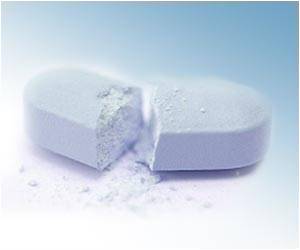Researchers conducted an in-depth review of the latest practices, challenges, and global progress in standardizing a crucial tissue culturing technology.

Organoids, often called “living biobanks,” are miniature, lab-grown replicas of organs derived from stem cells. They mimic the structure and function of real organs, making them crucial for biomedical research and drug testing. There are two main types: adult stem cell-derived organoids (or patient-derived organoids) and those from induced pluripotent or embryonic stem cells. These organoids can be cultured, cryopreserved for long-term storage, and thawed for ongoing experimentation, offering valuable insights into diseases and treatment development (1✔ ✔Trusted Source
Living biobank: Standardization of organoid construction and challenges
).
Advertisement
Standardization in Biomedical Research: Ensuring Reliable Results
Standardization plays a crucial yet often overlooked role in driving technological advancements across diverse fields, including science, technology, economics, and management. In biomedical research, standardization is paramount for generating reproducible, reliable, and meaningful results. As organoids become increasingly important in the development of new drugs, standardized operation and management at every step of organoid construction is vital to ensure high-quality, and consistent outcomes of end products.
In this vein, a research team from China led by Dr. Yingyan Yu from Ruijin Hospital, Shanghai Jiao Tong University School of Medicine, and Dr. Hengjun Gao from the National Engineering Center for Biochip at Shanghai, conducted a comprehensive review of the history and current state of standardization in organoid construction, highlighting ongoing challenges. Their review was published in the Chinese Medical Journal.
Advertisement
ISO’s Global Impact on Industry Standards
The International Organization for Standardization (ISO), based in Geneva, Switzerland, is responsible for developing and overseeing global standards across various industries, including quality management, environmental management, food safety systems, and many more. Products from different countries compete fairly on a global scale following the international standards set by the ISO. “Standardization is necessary to promote the development of life sciences, improve product quality, and promote the integration and sharing of data,” says Dr. Yu.
Advertisement
Processing and Culturing Organoids in a Controlled Environment
Organoid creation begins with collecting and preserving human tissue. The tissue should be processed within 30 minutes after collection, by treating it with specific solutions. They are cultured in a controlled environment, with new generations formed every two weeks. Cryopreservation preserves the “living biobank,” and organoids can be revived by thawing. Contaminated organoids, indicated by cloudy media or unwanted cells, must be discarded in accordance with the health and safety protocols.
The first international standard in the field of biobank was the ISO 20387, titled ‘General Requirements for Biobanking,’ published by the ISO in 2018. “Recently, the ISO/TC 276 committee initiated the drafting of organoid-related standards through international collaboration. Our team, as the group, contributed to the drafting process and participated in the first round of feedback,” highlights Dr. Yu.
Standardized Operating Procedures in Organoid Preparation
Standardized operating procedures should ideally be followed at every step of organoid preparation. It is important to note that the construction of organoids, which involves the collection and preservation of human biological samples, requires approval from the ethical committee of the sample provider and informed consent from the donor. This consent encompasses, but is not limited to, the preservation of samples, their use in scientific research, drug susceptibility testing, and the potential application of research findings in clinical settings.
Laboratory Standards for Organoid Construction in China
In their review, the authors also explored the various standardization systems currently followed in China, including national, field-specific, regional, academic, and enterprise standards. “The construction of high-quality organoids depends on well-established laboratories,” says Dr. Yu. “In China, laboratory requirements vary based on the purpose of the experiments conducted. The construction of cell culture rooms is typically divided into three tiers, namely basic research, drug development, and the production of therapeutic biopharmaceuticals,” explains Yu.
Challenges in Standardizing Organoid Construction
Despite significant progress, standardizing organoid construction remains challenging due to factors such as variability in cell types and growth rates, particularly in organoids derived from patient tissues. High production costs and technical inconsistencies further hinder the broader application and industrialization of organoid technologies. However, advancements such as AI-assisted evaluation, integration with clinical data, and international initiatives to establish standardized guidelines—like those led by the ISO/TC 276 committee—provide promising prospects.
With continued progress, organoids are poised to become a powerful tool in biomedical research, and standardization will contribute to their widespread implementation.
Reference:
- Living biobank: Standardization of organoid construction and challenges – (https://journals.lww.com/cmj/fulltext/2024/12200/living_biobank__standardization_of_organoid.7.aspx)
Source-Eurekalert



